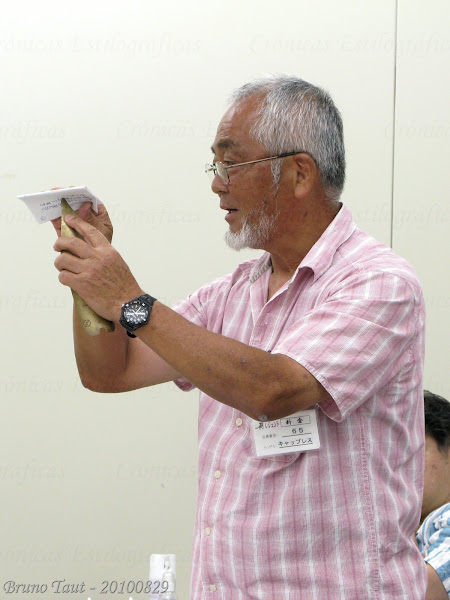In
2015, a “techincal partnership” between luxury brand Davidoff and Sailor gave rise to the Very Zino line of pens which were, in actual terms, made by the Japanese company.
The two resulting models, the unnamed regular and the Mini, were generated around
the big and the medium sizes of Sailor nibs, following the company's naming. In fact, the pens are little else than variations on the Profit and ProGear units included in its catalog, but priced at a much higher point.
|
. 2015 . |
. 2025 . |
| . Sailor . |
. Davidoff . |
. Sailor . |
. Davidoff . |
| Medium / Mini . |
. 10000 (14 K) .
15000 (21 K) |
. 28000 (18 K) . |
. 18000 (14 K) (*) .
28000 (21 K) |
. 33000 (18 K) (**) . |
| Big |
20000 (21 K) |
30000 (18 K) |
32000 (21 K) |
35000 (18 K) (**) |
Prices of Davidoff and equivalent Sailor pens in 2015 and 2025 in JPY before taxes. For Sailor models the cheaper possible price among the different variants was chosen.
(*) In 2025, the transparent version of the Sailor Profit Light/Standard has a price of JPY 17000.
(**) The 2025 prices of the Davidoff pens are those of the later catalog. Discounts up to 50% can be found in Tokyo.
For some reason, the Davidoff pens did not do well, and by 2018 the brand was nowhere to be seen in the pen scene in Japan. Well, not exactly true—leftover Davidoff pens can be seen heavily discounted at some retailers.
On the picture, a Davidoff Very Zino Resin in black with a silver trim and a rhodiated nib.
 Davidoff Very Zino Resin.
Davidoff Very Zino Resin.
This pen, as well as its smaller sibling the Very Zino Resin Mini, came with two possible trims –gold and silver, with matching nibs—, and in two different colors—black and red (burgundy). The nib points, on both models, were EF, F, M, and B.
 The Very Zino on its catalog.
The Very Zino on its catalog.
Davidoff's nibs are geometrically identical –therefore, interchangeable— to those in the Sailor pens. The only difference, besides the obvious detail of the engraving, lies on the purity of the gold—21 K and 14 K for Sailor, 18 K for Davidoff, although in some distant past, Sailor also used 18 K gold for their big nibs.
 From top to bottom, Sailor Black Luster, Davidoff Very Zino Resin, and Sailor ProGear.
From top to bottom, Sailor Black Luster, Davidoff Very Zino Resin, and Sailor ProGear.
The Very Zino pens use standard cartridges and converters, and for that purpose the Sailor feeds and sections had to be modified to accommodate a different cartridge nipple.
 Sailor on the left, Davidoff on the right. In between, their corresponding feeds.
Sailor on the left, Davidoff on the right. In between, their corresponding feeds.
Davidoff's pens share the fundamental dimensions with the Sailor counterparts. The differences are limited to the finials, and caps, sections and barrels are interchangeable among them. The only limitation is associated to the extra length of the standard converter in the Davidoff—it does not fit in the Sailor barrels.
These are the dimensions of the Davidoff Very Zino Resin (regular) pen together with those of the Sailor Profit (in the Black Luster version) and of the ProGear:
|
Davidoff
.Very Zino. |
Sailor
.Black Luster. |
Sailor
. ProGear . |
| Length closed (mm) |
133 |
141 |
128 |
| Length open (mm) |
120 |
123 |
116 |
| Length posted (mm) |
149 |
154 |
148 |
| Diameter (mm) |
16.7 |
16.0 |
15.9 |
| Weight (dry, g) |
38.6 |
28.4 |
24.5 |
| Ink deposit (ml) |
. 0.7/1.45/0.8 (*) . |
1.2/0.7 (**) |
. 1.2/0.7 (**) . |
Dimensions of the standard size Davidoff Very Zino together with those of the 21 Series of the Sailor (Profit) Black Luster and Pro Gear.
(*) Volumes of the short standard cartridge, long standard cartrige, and the Davidoff standard converter.
(**) Volumes of the Sailor cartridge and Sailor converter.
The Davidoff pen in standard size shares the section with the Profit Black Luster (and other FL models, of course). In the case of the Mini, there is no equivalent in the Sailor catalog. This detail adds some value to the Davidoffs as they are either unique or higher in the their position compared to Sailor models.
But, as previously mentioned, three years after their release in Japan, Davidoff was gone. I dare to say that the pricing was wrong and the goal of positioning those pens as a more luxurious product with respect to the equivalent Sailor models did not really work. After all, Davidoff might very well be a luxury brand, but it is a nobody in the world of fountain pens.
JD Fake Custom Urushi – Taccia Kuro
Bruno Taut
February 25th, 2025
etiquetas: Sailor, Davidoff, mercado
 Bungu Market in Ota ward in Tokyo. January 2025. This event is celebrated 4 times per year, and there are other Bungu Market events in other locations—Osaka, Fukuoka, Kyoto... .
Bungu Market in Ota ward in Tokyo. January 2025. This event is celebrated 4 times per year, and there are other Bungu Market events in other locations—Osaka, Fukuoka, Kyoto... .
 Bungu Joshi in June 2025 (https://youtu.be/pApUJqImr1c?si=-HXWmzS4Ed22tp_z). Twice a year event.
Bungu Joshi in June 2025 (https://youtu.be/pApUJqImr1c?si=-HXWmzS4Ed22tp_z). Twice a year event.
 Shumi-no Bungu Matsuri. Organized by the magazine Shumi-no Bungubako. July 2025. Photo courtesy of Inktraveler.
Shumi-no Bungu Matsuri. Organized by the magazine Shumi-no Bungubako. July 2025. Photo courtesy of Inktraveler.


























































